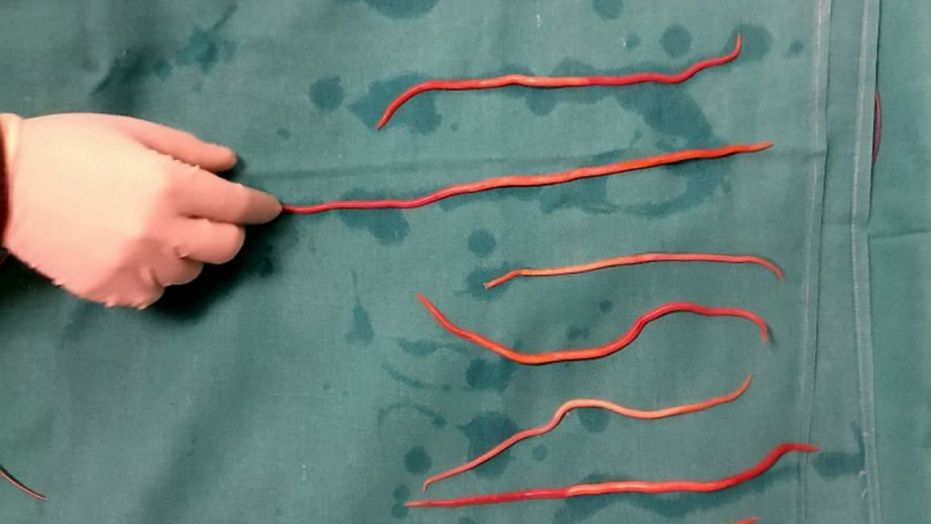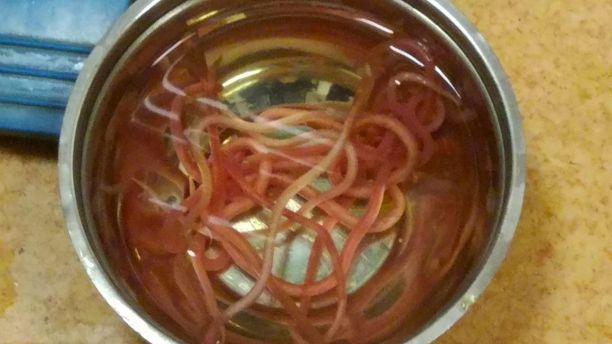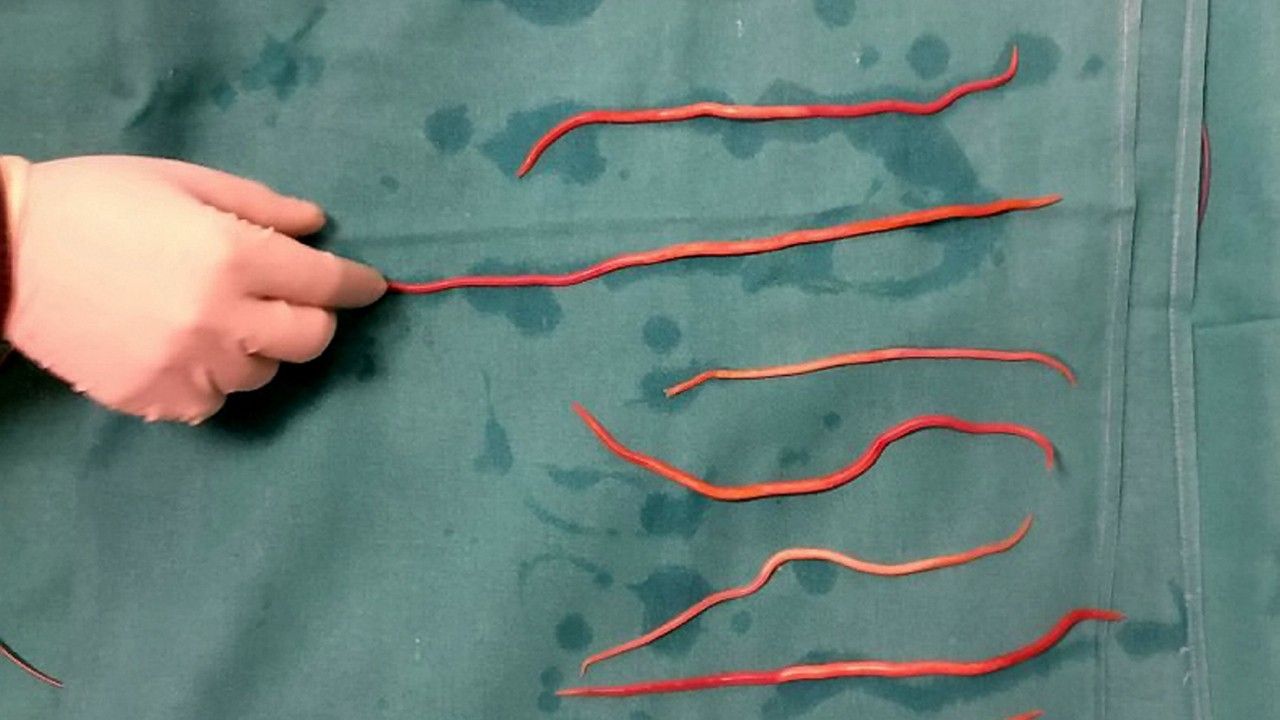[ad_1]

The patient, who was only identified by her first name, complained of agonizing pain for six months.
(SWNS)
Surgeons in India discovered 14 live worms wriggling inside a woman’s internal organs.
The woman, named only as Sunita, 38, visited the hospital after suffering with severe abdominal pain, fever, vomiting and episodes of jaundice for six months.
A CT-scan revealed more than a dozen live roundworms, measuring between 15-cm and 20-cm each, in the bile duct which connects the liver and intestines.
Surgeons at Fortis Hospital in New Delhi, removed the creatures using snares and forceps endoscopically, without surgery.
Roundworms reproduce in the human gut after eggs from adult worms enter the human food chain via contaminated soil.

The surgeons discovered 14 live roundworms in the patient’s bile duct.
(SWNS)
“My pain was so bad that I could barely stand on my feet,” Sunita said. “I had lost over 12 kilos (26-lbs.) in a span of a month. Thankfully they were able to diagnose my condition.”
“Once the surgery was completed I was completely pain-free. I am recovering and feeling much better now,” she said.
“Sunita came to the hospital with complaints of severe abdominal pain, fever, vomiting and intermittent episodes of jaundice for the last six months,” Dr. Arvind Khurana, head of gastroenterology at the hospital, said.
“She was advised to undergo an abdominal CT-scan which revealed the presence of worms in the bile duct which connects liver and intestines,” Khurana said. “The patient underwent an endoscopic procedure which revealed multiple live roundworms, each worm measured nearly 15-to-20 cm.”
“This was a daunting task. All worms were removed using snares and forceps,” Khurana said. “While it is common to find worms in intestines, it is uncommon for them to be found in the bile duct.
“India has the highest number of cases related to worms as the deworming medication is not routinely administered,” he said. “However, to see 14 worms is extremely rare. The patient had taken a second opinion at other hospitals which had misdiagnosed the condition and prescribed antibiotics for the pain.”
“Once properly diagnosed, we managed to remove all the roundworms endoscopically in a single session,” Khurana said. “Immediately after the removal, the patient was pain-free.”
[ad_2]
Source link

